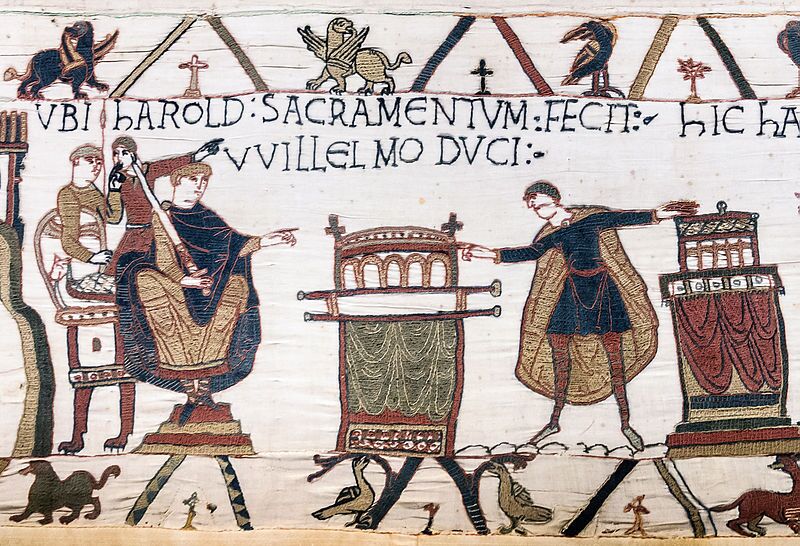The feudal system was introduced to England following the invasion and conquest of the country by William I, The Conqueror.
The feudal system had been used in France by the Normans from the time they first settled there in about 900AD. It was a simple, but effective system, where all land was owned by the King. One quarter was kept by the King as his personal property, some was given to the church and the rest was leased out under strict controls.
A simple plan showing how the feudal system works:
The King: Leader of the Feudal System
The King was in complete control under the feudal system (at least nominally). He owned all the land in the country and decided to whom he would lease land. He therefore typically allowed tenants he could trust to lease land from him. However, before they were given any land they had to swear an oath of fealty to the King at all times. The men who leased land from the King were known as Barons, they were wealthy, powerful, and had complete control of the land they leased from the King.
“How Important Was the Spice Trade to Medieval Europe?”
For the full “History Unplugged” podcast, click here!
Barons: Executors of the Feudal System
Barons leased land from the King that was known as a manor. They were known as the Lord of the Manor and were in complete control of this land. They established their own system of justice, minted their own money, and set their own taxes. In return for the land they had been given by the King, the Barons had to serve on the royal council, pay rent and provide the King with Knights for military service when he demanded it. They also had to provide lodging and food for the King and his court when they traveled around his realm. The Barons kept as much of their land as they wished for their own use, then divided the rest among their Knights. Barons were very rich.
Knights
Under the feudal system, Knights were given land by a Baron in return for military service when demanded by the King. They also had to protect the Baron and his family, as well as the Manor, from attack. The Knights kept as much of the land as they wished for their own personal use and distributed the rest to villeins (serfs). Although not as rich as the Barons, Knights were quite wealthy.
Villeins
Villeins, sometimes known as serfs, were given land by Knights. They had to provide the Knight with free labor, food, and service whenever it was demanded. Villeins had no rights. They were not allowed to leave the Manor and had to ask their Lord’s permission before they could marry. Villeins were poor. This was life under the feudal system.
This article is part of our larger selection of posts about the medieval period. To learn more, click here for our comprehensive guide to the Middle Ages.
This article is also part of our extensive collection of articles on Black History in the United States. Click here to see our comprehensive article on Black History in the United States.
This article is also part of our larger selection of posts about The Vikings. To learn more, click here for our comprehensive guide to The Vikings.
This article is also part of our larger selection of posts about The Normans. To learn more, click here for our comprehensive guide to The Normans.
This article is also part of our larger selection of posts about Medieval Life. To learn more, click here for our comprehensive guide to Medieval Life.
Cite This Article
"Feudal System: Medieval Life and Feudalism" History on the Net© 2000-2024, Salem Media.
May 1, 2024 <https://www.historyonthenet.com/medieval-life-feudalism-feudal-system>
More Citation Information.
